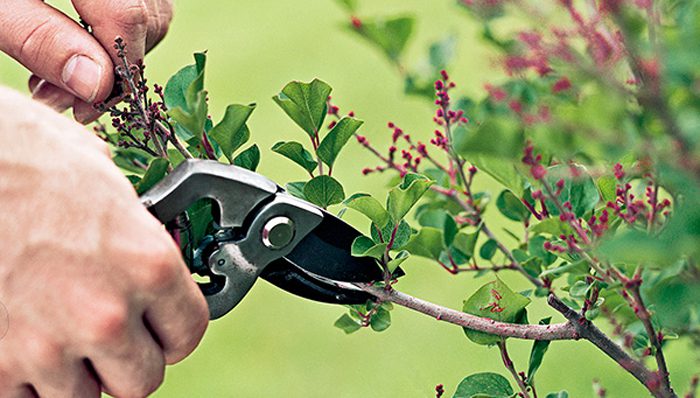
Spring Pruning 101
Spring Pruning for Beginners
As to the right time to prune any flowering tree or shrub, it’s best when it blooms in the spring time. For example, an azalea or a forsythia, a spiria or a lilac the best time to prune that plant is immediately after it finishes blooming, because that gives it plenty of time to grow new flower buds that are going to bloom the following spring. Plants that bloom in summer, such as potentilla, butterfly bush, and crepe myrtle, produce their flowers on new growth from the current season. Prune them in winter while they’re dormant, or in early spring just before they push out their new growth.
What to Do
Begin with the dead or damaged branches. You can use a set of sharp pruning shears, a saw or any pruning tool that will leave a clean cut and not a raw edge.
When you prune you must cut just above what is known as the branch collar, which is the bumpy tissue at the junction of the branch. The reason this is where you want to cut is because the bumpy area is full of plant growth cells and by leaving a clean cut it gives the plant or shrub a better chance to callus and recover.

Branch Collar
When cutting your plant or shrub you want to make sure that you cut at a 45degree angle. The reason for a 45degree cut is that the angle will not allow water or moisture to cradle, whereas a flat cut can cradle water or moisture and can cause fungus.
When pruning you want the result to be as NATURAL as possible. To accomplish this “natural look “ you want to locate the tallest branch. Then you want to follow the tallest branch until you see a lower branch that points upwards. You would then cut the taller branch to match the smaller branch. You repeat this process with all of the branches until you get your desired result.
For additional information on pruning, visit UGA Extension PDF – Pruning Plants in the Landscape
If you need anything else, we are here to help. Contact us today if you have any further inquiries.




